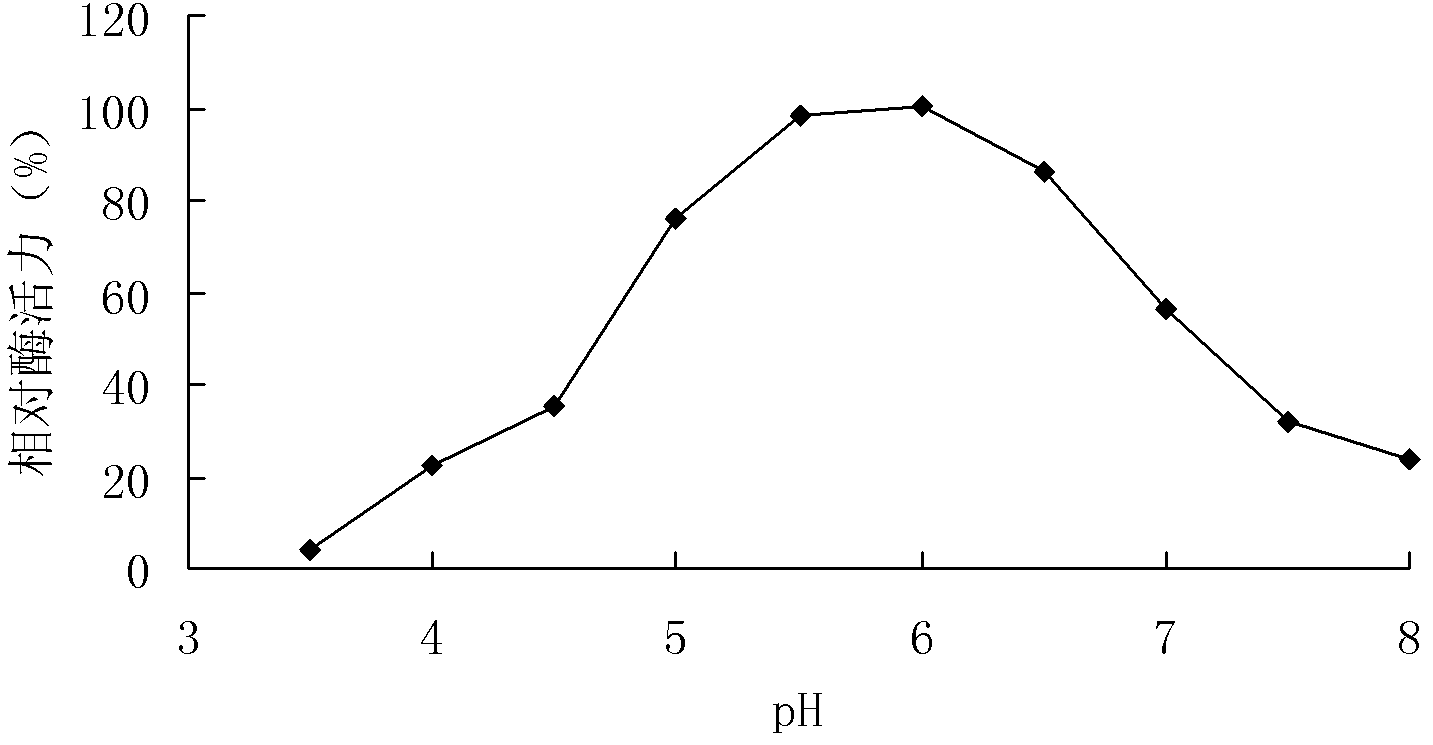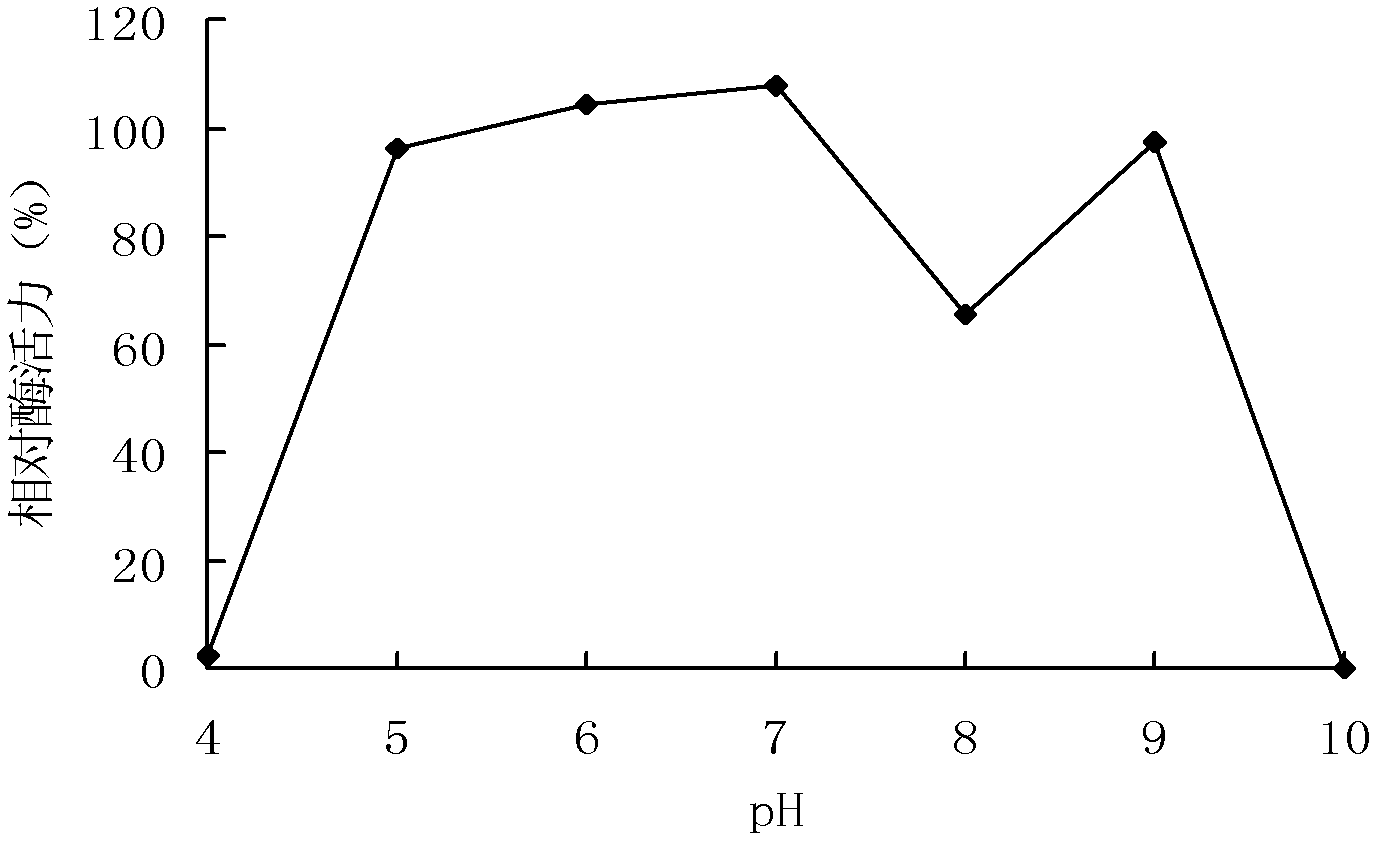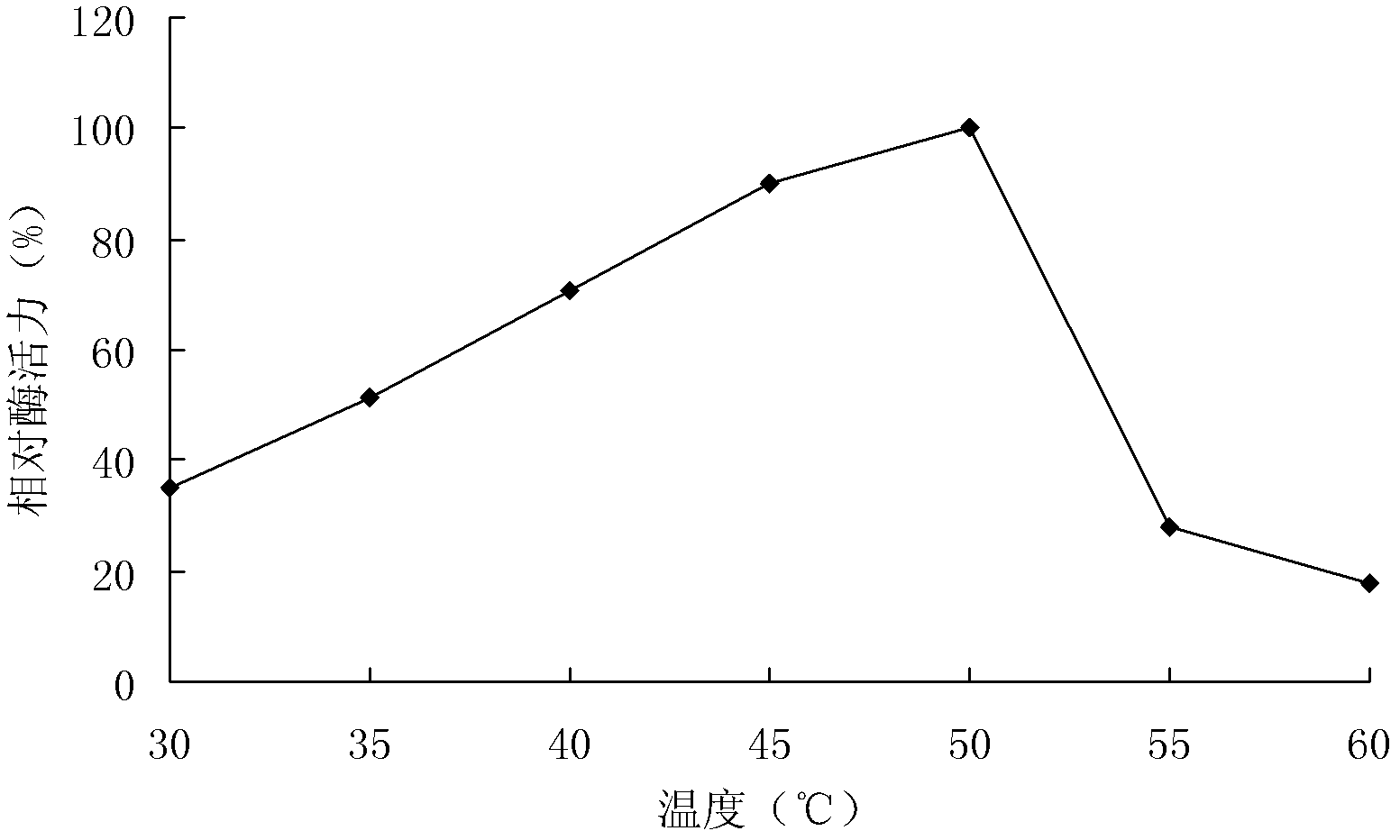Medium-temperature beta-glucosidase BglA1, gene of same and application of same
A technology of glucosidase, ppic9-bgla1, applied in the field of genetic engineering, can solve problems such as poor thermal stability and inability to meet medium and high temperature industrial processing
- Summary
- Abstract
- Description
- Claims
- Application Information
AI Technical Summary
Problems solved by technology
Method used
Image
Examples
Embodiment 1
[0082] Example 1 Separation of Phialophora sp.XH6 and Enzyme Production Characteristics
[0083] Phialophora sp.XH6 is isolated from tin ore waste liquid in Yunnan mining area, pH3.0. The isolation medium is PDA medium, pH 3.0, and single bacteria are obtained by multiple dilution and plating. In the PDA medium for 14 days at 28°C, the colonies are flat, compact, dark brown, and 1.5-2 cm in diameter. Mycelium superficial or buried, mycelia light brown, smooth, septate, branched and form a network. The conidiophores are short, some are bottle-shaped, dark, and the conidiophores are solitary or verticillate. Conidia translucent to dark. Unicellular. Spherical to oval. The bacterium belongs to the genus Phialophora and is named XH6 (Phialophora sp.). The strain was preserved on October 21, 2011 in the General Microbiology Center of the China Committee for the Collection of Microbial Cultures (No. 3, No. 1, Beichen West Road, Chaoyang District, Beijing, Institute of Microbio...
Embodiment 2
[0085] Example 2 Cloning of Phialophora XH6 (Phialophora sp.) β-glucosidase Encoding Gene BglA1
[0086] Extraction of Phialaphora XH6 (Phialophora sp.) Genomic DNA:
[0087] Centrifuge the culture of PDB liquid cultured at 30°C for 5 days to collect the bacteria, put it in a mortar and grind it with liquid nitrogen for 5 minutes, add 10mL of CTAB extract, put it in a 50mL centrifuge tube, lyse it in a water bath at 70°C for more than 3h, and mix it every 20min Once, centrifuge at 10,000 rpm for 5 min at 4°C. The supernatant was extracted in phenol / chloroform to remove impurity proteins, and then an equal volume of isopropanol was added to the supernatant. After standing at -20°C for 30 minutes, centrifuge at 10,000 rpm for 10 minutes at 4°C. The supernatant was discarded, the precipitate was washed twice with 70% ethanol, dried in vacuo, dissolved in 100ul TE, and placed at -20°C for later use.
[0088] The degenerate primers P1, P2 were designed and synthesized according t...
Embodiment 3
[0096] Example 3 Preparation of recombinant β-glucosidase
[0097] The expression vector pPIC9 is subjected to double enzyme digestion (EcoR I+Not I), and simultaneously the gene BglA1 encoding β-glucosidase is subjected to double enzyme digestion (EcoR I+Not I), and the gene fragment encoding β-glucosidase is cut out and The expression vector pPIC9 was ligated to obtain the recombinant plasmid pPIC9-BglA1 containing the XH6 (Phialophora sp.) β-glucosidase gene BglA1 and transformed into Pichia pastoris GS115 to obtain the recombinant Pichia pastoris strain GS115 / BglA1.
[0098] The GS115 strain containing the recombinant plasmid was inoculated in 300 mL of BMGY culture medium, and cultured with shaking at 250 rpm at 30°C for 48 hours, and then the bacteria were collected by centrifugation. Then resuspend in 150mL BMMY medium, shake culture at 250rpm at 30°C. After 72 hours of induction, the supernatant was collected by centrifugation. The activity of β-glucosidase was deter...
PUM
| Property | Measurement | Unit |
|---|---|---|
| molecular weight | aaaaa | aaaaa |
Abstract
Description
Claims
Application Information
 Login to View More
Login to View More - R&D
- Intellectual Property
- Life Sciences
- Materials
- Tech Scout
- Unparalleled Data Quality
- Higher Quality Content
- 60% Fewer Hallucinations
Browse by: Latest US Patents, China's latest patents, Technical Efficacy Thesaurus, Application Domain, Technology Topic, Popular Technical Reports.
© 2025 PatSnap. All rights reserved.Legal|Privacy policy|Modern Slavery Act Transparency Statement|Sitemap|About US| Contact US: help@patsnap.com



